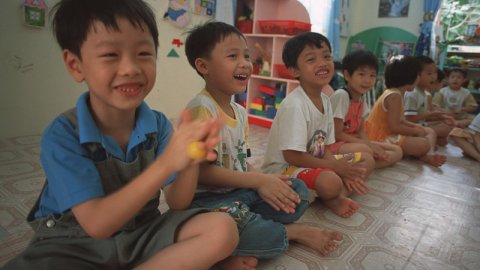Ivermectin Pharmacokinetics in Children and Adults Study Group
Ivermectin Pharmacokinetics in Children and Adults Study Group
Characterising the population pharmacokinetic properties of ivermectin in children and adults to inform optimal dosing of ivermectin

This Study Group's population pharmacokinetic (PK) analysis on ivermectin in adults and children, including healthy volunteers and patients, is currently ongoing. In our systematic literature review, data from a total of 21 published studies have been identified. We are now in the process of contacting potential data contributors to share these data. The outcomes will be circulated among participating investigators for feedback and approval.
Ivermectin is a broad-spectrum antiparasitic drug with a large therapeutic window, used for treatment and control of a range of neglected tropical diseases. These include mass drug administration for the control of scabies, onchocerciasis, lymphatic filariasis, as well as treatment of scabies, soil-transmitted helminthiasis and strongyloidiasis. Ivermectin is currently not licensed for use in children weighing less than 15 kg, due to limited safety data in this group. A recent individual patient data meta-analysis on the safety of ivermectin demonstrated that this drug is safe to administer to children [1]. Dosing in paediatric patients is traditionally based on a linear extrapolation from adult dosing. This simple extrapolation fails to consider the commonly observed nonlinear relationship between body weight, age and PK parameters determining exposure (i.e. elimination clearance). This usually results in lower drug exposures in small children and hence suboptimal treatment [2]. Recently, a few studies have suggested dosing for paediatric patients equivalent to adult or older children exposure [3, 4]. This study aims to evaluate the PK properties of ivermectin in children and adults using comprehensive individual-level data to inform optimal dosing.
1. To better understand and characterise the population PK properties of ivermectin using pooled data from various populations, including adults and children, as well as healthy volunteers and patients
2. To inform optimal dosing in paediatric patients weighing less than 15 kg
1. Ivermectin studies in humans
2. Participants of all ages including both healthy volunteers and patients
3. Drug concentrations of ivermectin
After uploading to the WWARN Data Repository, WWARN will standardise data sets according to the WWARN Clinical Data Management and Statistical Analysis Plan and pool into a single database of quality-assured individual patient data.
The pooled ivermectin PK database includes the following:
1. Dosing and dosing times
2. Capillary and/or venous plasma and/or whole blood ivermectin concentrations and sampling times
3. Covariates including bodyweight, age, ethnicity, sex, nutritional status, fasted or fed status, formulations, co-morbidities, concomitant medications, albumin concentrations, side effects
4. Sensitivity of the bioanalytical method (i.e. lower limit of quantification of ivermectin concentration measurements)
The Study Group comprises participating investigators who contribute relevant data sets to the pooled analysis. Data sets will remain the property of the investigator. The Study Group collectively makes decisions with respect to including additional studies, data analysis and plans for publication, in line with the WWARN Publication Policy. The Study Group is led by Professor Joel Tarning, Head of the Pharmacometric Modelling Scientific Group of IDDO. Dr Piyanan Assawasuwannakit is leading the pharmacometric analysis. These individuals coordinate activities including the completion of data collation, plans for analysis, and drafting of publications and reports for group review.
For further information, email Professor Joel Tarning joel.tarning@wwarn.org and/or Dr Piyanan Assawasuwannakit piyanan@tropmedres.ac
1. Jittamala P, Monteiro W, Smit MR, et al. A systematic review and an individual patient data meta-analysis of ivermectin use in children weighing less than fifteen kilograms: Is it time to reconsider the current contraindication? PLoS Negl Trop Dis. 2021;15(3): e0009144.
2. Schulz JD, Coulibaly JT, Schindler C, Wimmersberger D, Keiser J. Pharmacokinetics of ascending doses of ivermectin in Trichuris trichiura-infected children aged 2-12 years. J Antimicrob Chemother. 2019;74(6): 1642-1647.
3. Brussee JM, Schulz JD, Coulibaly JT, Keiser J, Pfister M. Ivermectin Dosing Strategy to Achieve Equivalent Exposure Coverage in Children and Adults. Clin Pharmacol Ther. 2019;106(3): 661-667.
4. Gwee A, Duffull S, Zhu X, et al. Population pharmacokinetics of ivermectin for the treatment of scabies in Indigenous Australian children. PLoS Negl Trop Dis. 2020;14(12): e0008886.


